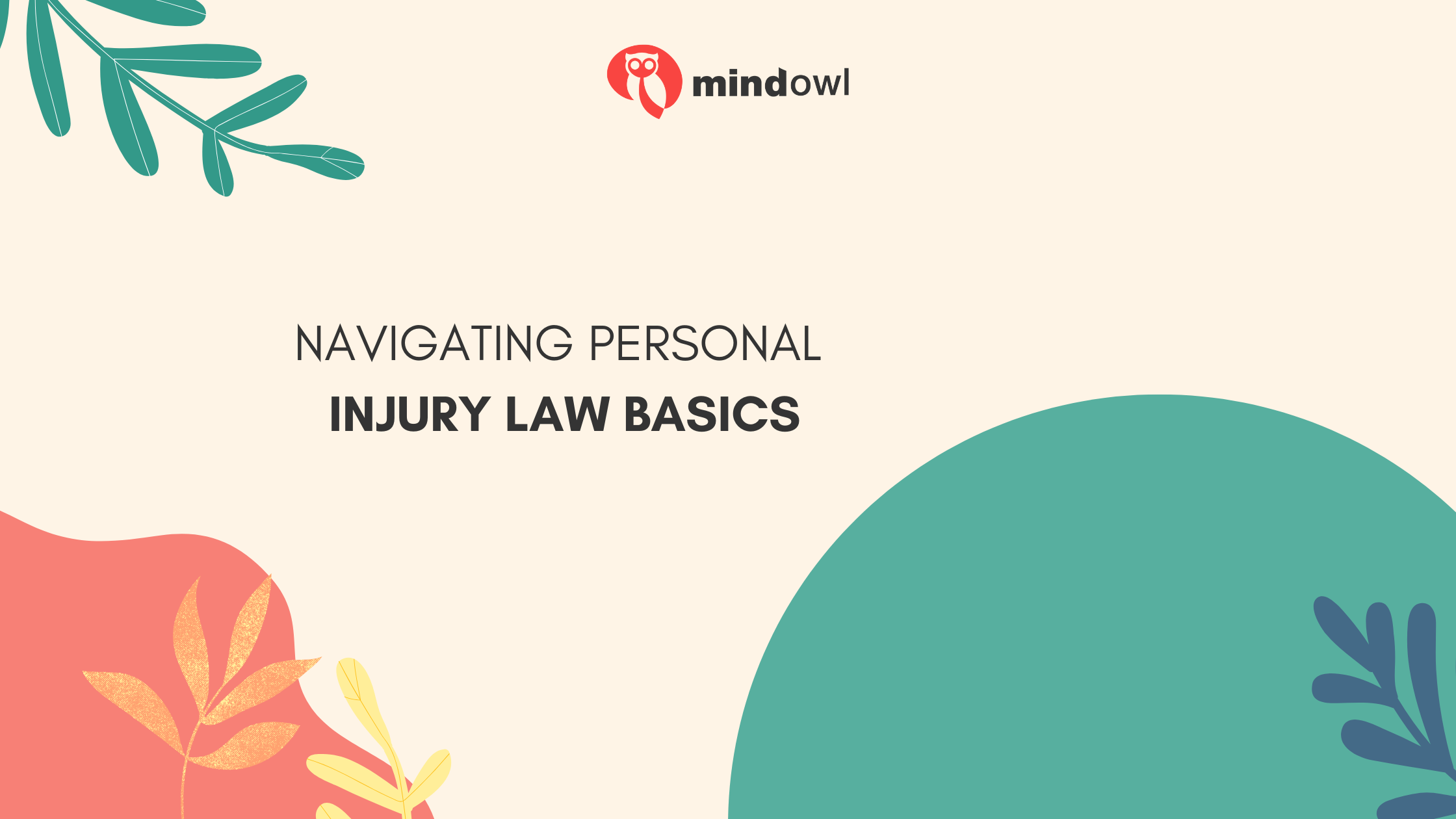
Been injured because someone else screwed up?
You’re definitely not alone. 39.5 million personal injury cases requiring medical treatment happen every year in the United States. That’s 126.3 cases per 1,000 people.
Here’s the problem:
Most people have no clue about their rights when they get injured. They settle for pennies on the dollar or don’t pursue a claim at all.
But here’s the good news…
Understanding personal injury law basics can be the difference between walking away with nothing and getting the compensation you deserve.
What you’ll discover:
- Personal Injury Law Fundamentals
- Your Rights as an Injured Person
- When You Need Legal Help
- How Much Your Case Could Be Worth
- Getting the Compensation You Deserve
Personal Injury Law Fundamentals
Personal injury law covers any situation where you get hurt because of someone else’s carelessness or deliberate actions.
But here’s what most people don’t realize…
You don’t need to prove the other person meant to hurt you. You just need to show they were negligent.
It means they failed to act reasonably and their actions directly caused your injury.
Think about it:
If some driver runs a red light and hits your car, they were negligent. If a store owner ignores a spill and you slip and break your leg, that’s negligence too.
The key is connecting their negligent behavior directly to your injury. This connection is called “causation” and it’s crucial to your case.
Personal injury law services exist to help people navigate this complex legal maze. Whether you’re dealing with a car wreck, medical malpractice, or a slip and fall, these cases all follow the same basic principles.
Pretty straightforward, right?
Your Rights as an Injured Person
When someone injures you through their negligence, you’ve got several important rights.
First, you have the right to seek full compensation for your damages. This covers:
- Medical bills (both current and future)
- Lost wages from missing work
- Pain and suffering
- Property damage
- Loss of enjoyment of life
Second, you have the right to legal representation. The other party’s insurance company will have teams of lawyers working to minimize what they pay you. You deserve someone fighting for your interests.
Third, you have the right to a fair settlement process. 95% of personal injury cases settle without seeing a courtroom, but that doesn’t mean you should jump on the first offer.
Here’s what insurance companies do…
They start with lowball offers hoping you’ll take them and go away. But experienced compensation lawyers Melbourne, FL know exactly how to negotiate with these companies and push for fair compensation.
The right attorney will properly evaluate your case and fight to get you what you deserve, not just what the insurance company wants to pay.
When You Need Legal Help
Wondering if you really need a lawyer for your injury case?
Here are the clear warning signs you should get professional help:
Your injury is serious. If you suffered permanent damage, needed surgery, or will have long-term medical issues, don’t go it alone.
The other party denies fault. When someone refuses to take responsibility, you need legal expertise to prove your case.
The insurance company is playing games. Delays, denials, and lowball offers are tactics to wear you down. A lawyer knows how to handle these games.
Multiple parties were involved. Car accidents with several vehicles or workplace injuries get complicated fast.
You’re unsure about fault. Sometimes it’s not clear who caused the accident. A lawyer can investigate and determine liability.
Here’s the kicker…
Don’t wait too long to get help. Every state has a “statute of limitations” that puts a strict time limit on when you can file a lawsuit. Miss this deadline and you lose your right to compensation forever.
Most personal injury lawyers work on contingency, which means you don’t pay unless you win. There’s no financial risk to getting a consultation.
How Much Your Case Could Be Worth
Want to know what your case might be worth?
It depends on several key factors, but understanding these basics will help you know what to expect.
Economic damages are straightforward to calculate. They include:
- Medical expenses (current and future)
- Lost wages and earning capacity
- Property damage
- Out-of-pocket costs
Non-economic damages are trickier. These cover:
- Pain and suffering
- Emotional distress
- Loss of enjoyment of life
- Relationship impacts
Medical malpractice cases tend to have higher values. The average medical malpractice settlement in the USA is $329,565, though severe cases often reach much higher amounts.
Car accident settlements vary wildly based on injury severity. Minor cases might settle for a few thousand dollars, while serious accidents can result in six or seven-figure settlements.
Here’s something that’ll blow your mind:
The personal injury law industry brought in $57.3 billion in revenue in 2024. That’s an enormous amount of money being paid out to injured people, but it also shows exactly how much insurance companies are willing to spend to minimize their payouts.
Your case value depends on the specifics of your situation. Factors like your age, income, injury severity, and how the accident affects your daily life all play major roles.
Getting the Compensation You Deserve
Ready to pursue your personal injury claim?
Here’s how the process works:
Step 1: Get medical treatment immediately. Your health comes first, and medical records become crucial evidence for your case.
Step 2: Gather evidence. Take photos, get contact information from witnesses, and keep all documents related to your injury and expenses.
Step 3: Contact a lawyer. Most offer free consultations where they’ll evaluate your case and explain your options.
Step 4: Investigation and case building. Your attorney will gather additional evidence, consult with experts, and calculate your damages.
Step 5: Negotiate with insurance companies. This is where having professional representation pays off.
Step 6: Settlement or trial. Most cases settle during negotiations, but sometimes going to court is necessary to get fair compensation.
The timeline varies, but most straightforward cases resolve within 6-12 months. Complex cases can take longer, especially if they go to trial.
Here are the biggest mistakes people make:
- Accepting the first settlement offer
- Signing documents without understanding them
- Posting about their injury on social media
- Waiting too long to seek legal help
- Trying to handle everything themselves
Think about it:
Insurance companies have teams of lawyers and adjusters working to pay you as little as possible. You deserve someone equally skilled working for your interests.
Personal injury law exists to protect people who get hurt through no fault of their own. It ensures negligent parties take responsibility for the harm they cause.
Wrapping It All Up
Personal injury cases can seem overwhelming, but understanding your rights makes a massive difference.
You have the right to fair compensation when someone else’s negligence injures you. You have the right to legal representation that fights for your interests.
The most important thing? Don’t wait. Evidence disappears, witnesses forget details, and statutes of limitations expire.
If you’ve been injured, get medical care and talk to a qualified personal injury attorney right away. Most consultations are free, and you’ll learn what your case is worth.
Your injury shouldn’t become a financial disaster. With the right legal help, you can focus on healing while someone else handles the legal complexities.
Remember: insurance companies aren’t on your side. They’re businesses trying to minimize payouts. But with proper representation, you can level the playing field and get the compensation you need to move forward with your life.
MindOwl Founder – My own struggles in life have led me to this path of understanding the human condition. I graduated with a bachelor’s degree in philosophy before completing a master’s degree in psychology at Regent’s University London. I then completed a postgraduate diploma in philosophical counselling before being trained in ACT (Acceptance and commitment therapy).
I’ve spent the last eight years studying the encounter of meditative practices with modern psychology.

